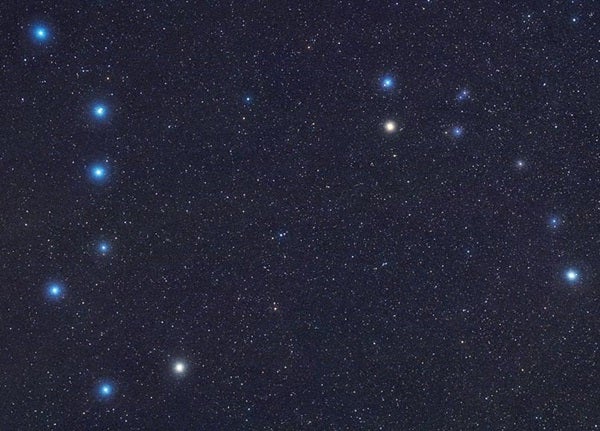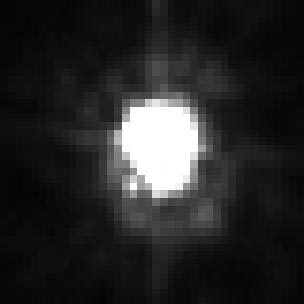Using the Hubble Space Telescope, a team of astronomers has imaged a never-before-seen companion of Polaris, the North Star. Although astronomers have long known of the companion’s presence through its effects on Polaris’ spectrum, the star’s orbit hugs Polaris so tightly it was lost in the brighter star’s glare — until now.
“The star we observed is so close to Polaris that we needed every available bit of Hubble’s resolution to see it,” says Nancy Evans of the Harvard-Smithsonian Center for Astrophysics, who led the study. She presented her findings Monday at the American Astronomical Society meeting in Washington.
The companion, known as Polaris Ab, lies less than 0.2″ from Polaris — an angle equivalent to a quarter’s width seen from 19 miles (30 kilometers) away. At the system’s 430 light-year distance, this translates to a distance of about 2 billion miles (3.2 billion km), or about as far from Polaris as the planet Uranus is from our Sun.
For stars, mass is destiny — it’s a key parameter in determining how a star evolves. “Mass is the most prized piece of information,” says Evans, but it’s also one of the most difficult to obtain. “Spectrographic observations for more than 100 years indicated a companion with a period of about 30 years,” she explains. But only by measuring the star’s distance from Polaris could astronomers obtain a mass directly. The result: Polaris weighs 4.3 ± 1.1 solar masses.
A more distant partner, discovered by William Herschel in 1780, can be seen in small telescopes. But Polaris B lies 100 times farther from Polaris than the close companion and takes thousands of years to complete an orbit. Astronomers believe Polaris B is a member of the system mainly because it shares Polaris’ motion through space.
Polaris is one of the sky’s best-known stars because it’s the brightest one near the North Celestial Pole, the point around which the sky appears to rotate. For this reason, many cultures recognize Polaris’ role as “the nail of heaven.” The star also serves as a guiding light, blazing the location of true geographic north to anyone who knows how to find it.
Of greater importance to modern astronomers, Polaris is the nearest and brightest member of a variable-star class known as Cepheids. These pulsating stars help astronomers determine the distances to nearby galaxies. By improving their knowledge of Polaris, astronomers will better understand the workings of a key player in the cosmic distance scale.
“Polaris,” says Evans, “is the star we steer by.”











